All issues

Volume 15, Issue 3
Displaying 1-1 of 1 articles from this issue
- |<
- <
- 1
- >
- >|
-
Akiko KAWAJI, Tomomichi SONE, Reiko NATSUKI, Masakazu ISOBE, Eigo TAKA ...1990 Volume 15 Issue 3 Pages 145-156
Published: August 25, 1990
Released on J-STAGE: February 21, 2008
JOURNAL FREE ACCESSEffects of poisonous mushroom extracts on isolated rat hepatocytes were studied. Though no significant decrease in the cell viability was observed during the incubation of hepatocytes with the extracts at a concentration of 5%(v/v) of Amanita abrupta, A. gymnopus, and A. virosa caused marked decreases in the intracellular glutathione content in sharp contrast to the extracts of A. volvata and A. flavipes. Comparative toxicity tests were carried out for the effects of the extract of A. abrupta, dl-propargylglycine, and α-amanitin. The extract of A. abrupta at a concentration of 1%(v/v) caused a marked decrease in the glycogen content, a noticeable elevation in the phosphorylase a activity, and a slight acceleration of lipid peroxidation in the hepatocytes. Although dl-propargylglycine decreased the intracellular glutathione content progressively with the incubation time, a significant effect of the chemical on lipid peroxidation and the glycogen content was observed only after prolonged incubation at a concentration of 5 mM. On the other hand, α-amanitin exerted a little effect on the hepatocytes at 1 μM. These results have indicated that the intoxication by the extract of A. abrupta on the hepatocytes might not due to independently each component, dl-propargylglycine and α-amanitin, but combined effect of these components or unidentified substances.View full abstractDownload PDF (911K)
- |<
- <
- 1
- >
- >|